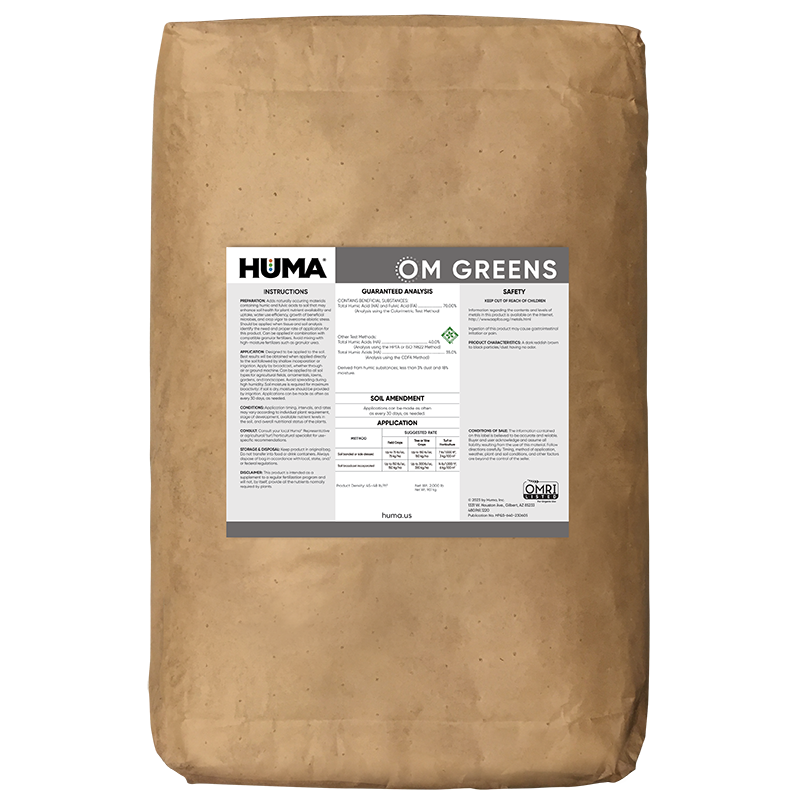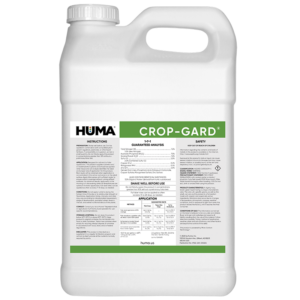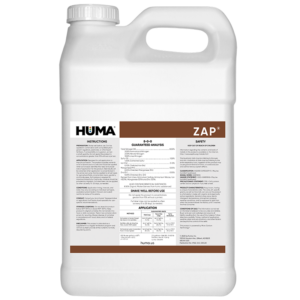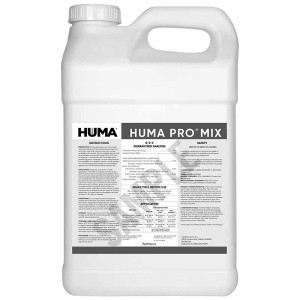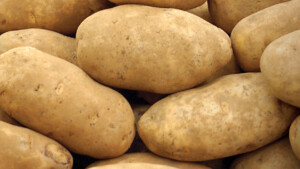OM GREENS
Benefits of Use:
- Uniform granular size promotes even coverage/distribution of humic/fulvic acid for sustainable carbon benefit
- Long-term soil organic-matter building
- Increased water penetration
- Increased flocculation of clays
- Promotes conversion of fertilizer into plant-available food
- Increases soil nutrient mineralization
- Sustainable soil microbial activation
FAQs
Related Videos
Huma Minute – What is Humic Acid with Cory Ritter
Huma Mid-West Regional Sales Manager Cory Ritter discusses the different types of humic acids and what they do for your plants.
Learn More
Huma Minute – Humate Application Rates with Cory Ritter
Huma Mid-West Regional Sales Manager Cory Ritter discusses humate application rates and why there is not a one-size fits all rate.
Learn More
Huma Minute – Humic Acid Testing Methods with Cory Ritter
Huma Mid-West Regional Sales Manager Cory Ritter discusses the differences in the various humic acid testing methods.
Learn More
Related Products
Related Case Studies
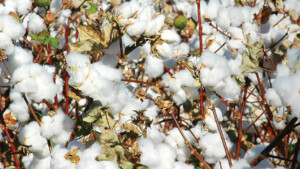
Huma® Zap® Increases Cotton Lint Yield by 125.8 lb/A, With 67% ROI
Background Application of Zap® to soils in combination with other Huma® fertilizers at various locations previously resulted in crops with improved plant growth and higher yields. Applying Zap® with grower standard products or as a single product application to soil and plants could also impact results. Objective The focus of this study was to observe

Huma® Promax® and Zap® Decrease Charcoal Rot in Florida Strawberry, With Increased Yield and ROI of 10:1
Background Charcoal rot, caused by the soil-borne pathogen Macrophomina phaseolina, can be a significant threat to strawberry production. Two Huma® products, Promax® and Zap®, had previously been shown to be successful in managing soil-borne diseases in strawberries. Objectives The primary objectives of this study were to assess the efficacy of Promax® and Zap® in reducing

Huma® X-Tend® Increases Cotton Yield With 295% ROI
Background X-Tend® mixed with other fertilizers applied to specific crops has enhanced results with improved plant growth and higher yields. Combining X-Tend® with grower standard products applied to soil and when applied as a single product foliar application could also impact results. Objective The focus of this study was to observe if X-Tend® as a yield enhancing
Related Blog Posts
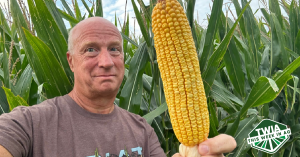
This Week in Ag #79
Seeing is believing. And I’m convinced the recent WASDE reports on crop production aren’t lying. Over the weekend we took my son to college. Our scenic journey through farm country – beauty is in the eye of the beholder, after all – took us deep into the Corn Belt. The projected 2024 corn yield in the Prairie State

Research Report: Biostimulant Effect of Humic Acids on Tomato Plants Under Nutritional Stress
In a research study, originally published in Frontiers in Plant Science, May 2021, Vol. 12:660224, the biostimulant properties of humic acid (HA) were tested on Micro Tom tomato plants under increasing nutritional stress. The results confirmed the positive role humic acids play in enhancing nutrient efficiency uptake in plants. A team of scientists from the


